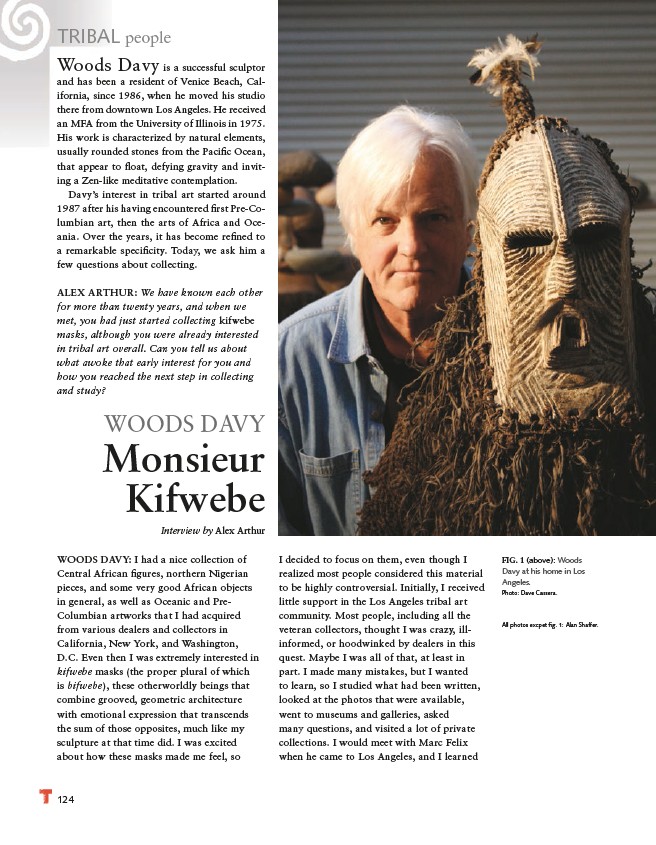
TRIBAL people
Woods Davy is a successful sculptor
and has been a resident of Venice Beach, California,
there from downtown Los Angeles. He received
an MFA from the University of Illinois in 1975.
His work is characterized by natural elements,
usually rounded stones from the Pacifi c Ocean,
that appear to fl oat, defying gravity and inviting
a Zen-like meditative contemplation.
Davy’s interest in tribal art started around
1987 after his having encountered fi rst Pre-Columbian
a remarkable specifi city. Today, we ask him a
few questions about collecting.
ALEX ARTHUR: We have known each other
for more than twenty years, and when we
met, you had just started collecting kifwebe
masks, although you were already interested
in tribal art overall. Can you tell us about
what awoke that early interest for you and
how you reached the next step in collecting
and study?
124
since 1986, when he moved his studio
art, then the arts of Africa and Oceania.
Over the years, it has become refi ned to
WOODS DAVY
Monsieur
Kifwebe
FIG. 1 (above): Woods
Davy at his home in Los
Angeles.
Photo: Dave Cassera.
All photos excpet fi g. 1: Alan Shaffer.
WOODS DAVY: I had a nice collection of
Central African fi gures, northern Nigerian
pieces, and some very good African objects
in general, as well as Oceanic and Pre-
Columbian artworks that I had acquired
from various dealers and collectors in
California, New York, and Washington,
D.C. Even then I was extremely interested in
kifwebe masks (the proper plural of which
is bifwebe), these otherworldly beings that
combine grooved, geometric architecture
with emotional expression that transcends
the sum of those opposites, much like my
sculpture at that time did. I was excited
about how these masks made me feel, so
I decided to focus on them, even though I
realized most people considered this material
to be highly controversial. Initially, I received
little support in the Los Angeles tribal art
community. Most people, including all the
veteran collectors, thought I was crazy, illinformed,
or hoodwinked by dealers in this
quest. Maybe I was all of that, at least in
part. I made many mistakes, but I wanted
to learn, so I studied what had been written,
looked at the photos that were available,
went to museums and galleries, asked
many questions, and visited a lot of private
collections. I would meet with Marc Felix
when he came to Los Angeles, and I learned
Interview by Alex Arthur